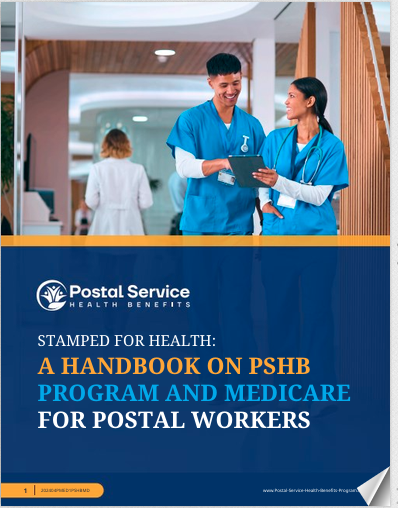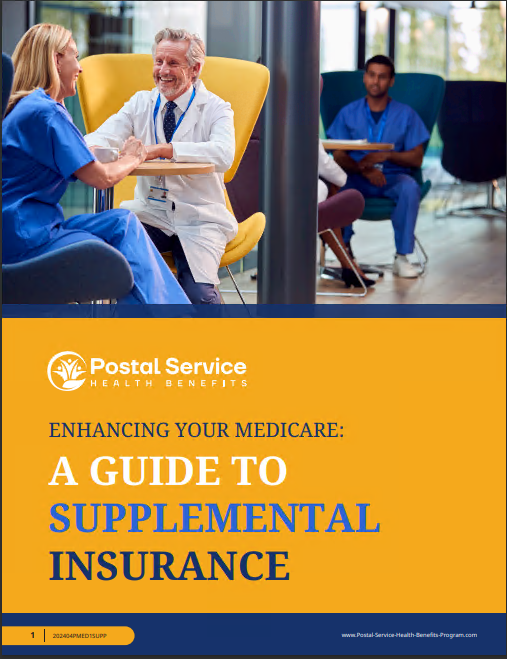Key Takeaways:
- Determining eligibility and enrolling in the PSHB Program involves understanding the specific requirements for USPS workers and following the step-by-step enrollment process.
- Staying informed about key dates and utilizing available resources can ensure a smooth transition to the new health benefits program.
Joining the PSHB Program: Steps for USPS Workers to Determine Eligibility and Enroll
The Postal Service Health Benefits (PSHB) Program is set to begin in January 2025, bringing significant changes to the health benefits landscape for USPS employees, retirees, and their families. This new program, established under the Postal Service Reform Act (PSRA), is designed to offer more tailored, cost-effective health coverage options specifically for postal workers. As the transition approaches, it’s crucial for all eligible participants to understand what to expect, how to determine their eligibility, and the steps needed to enroll.
What is PSHB? Let’s Break It Down
The PSHB Program is a newly established health benefits system tailored specifically for USPS employees and annuitants. Unlike the Federal Employees Health Benefits (FEHB) Program, which serves a wide range of federal employees, PSHB is exclusive to USPS workers and their families. This focused approach aims to better address the unique healthcare needs of the postal workforce.
Key features of the PSHB Program include:
- Exclusive Coverage: PSHB provides health insurance exclusively for USPS employees, retirees, and their eligible family members, replacing the FEHB coverage for these groups.
- Medicare Integration: For retirees, PSHB plans will integrate with Medicare, particularly Medicare Part D for prescription drug coverage, ensuring comprehensive benefits and reducing out-of-pocket expenses.
- Tailored Health Plans: The plans offered under PSHB are designed to cater specifically to the health needs of postal employees, with enhancements in preventive care, mental health services, and chronic disease management.
Are You Eligible? Here’s How to Check
Determining your eligibility for the PSHB Program is the first crucial step. The program covers all current USPS employees, annuitants, and their eligible family members. If you are currently enrolled in the FEHB Program, you will need to transition to a PSHB plan. This applies to active employees, retirees, and their dependents.
Eligibility criteria include:
- Current USPS Employees: All active USPS employees are eligible for PSHB.
- Retirees: Postal retirees and their dependents are also eligible.
- Family Members: Eligible family members include spouses and dependent children.
To confirm your eligibility, you can contact your HR department or visit the USPS benefits website, where detailed guidelines and resources are available.
Important Dates for PSHB Enrollment
To ensure a smooth transition to the PSHB Program, it’s crucial to be aware of several key dates:
- Open Season Enrollment: The first opportunity to enroll in a PSHB plan will take place during the Open Season from November 11 to December 9, 2024. During this period, USPS employees, retirees, and their families must select their new health plans.
- Effective Date: Coverage under the PSHB Program will begin on January 1, 2025. It’s essential to complete enrollment during the Open Season to ensure continuous health coverage and avoid automatic enrollment in a default plan.
Mark these dates on your calendar and keep an eye out for reminders from USPS to ensure you don’t miss the enrollment window.
How to Apply for PSHB: Step-by-Step Guide
Enrolling in the PSHB Program involves several key steps. Here’s a detailed guide to help you through the process:
- Gather Necessary Information: Before you start the enrollment process, collect all the required information about your current health coverage, including details about your current FEHB plan, Medicare enrollment (if applicable), and any specific healthcare needs of you and your family members.
- Review Plan Options: Use comparison tools provided by USPS to review the different PSHB plans available. Pay attention to benefits, premiums, deductibles, and out-of-pocket costs to find a plan that best suits your needs.
- Check Provider Networks: Ensure that your preferred doctors, hospitals, and healthcare providers are included in the network of the PSHB plans you are considering. This will help avoid disruptions in your healthcare services.
- Understand Medicare Integration: If you are eligible for Medicare, make sure you understand how your PSHB plan integrates with Medicare Part B and Part D. This is crucial for retirees to ensure comprehensive coverage and reduce out-of-pocket expenses.
- Complete Enrollment During Open Season: Once you have chosen your PSHB plan, make sure to complete the enrollment process during the Open Season from November 11 to December 9, 2024. Follow the instructions provided by USPS to finalize your enrollment.
- Confirm Your Plan Selection: After completing your enrollment, verify that your plan selection is confirmed. You should receive a confirmation notice detailing your chosen plan and coverage starting January 1, 2025.
Choosing the Right Plan for You
Selecting the right PSHB plan is crucial for ensuring you receive the best possible healthcare coverage. Here are some tips to help you make an informed decision:
- Evaluate Your Healthcare Needs: Consider your current health status, any chronic conditions, and your anticipated healthcare needs. This will help you choose a plan that offers the most suitable coverage.
- Review Plan Benefits: Look at the specific benefits offered by each plan. Pay attention to coverage for preventive care, mental health services, prescription drugs, and specialized treatments.
- Compare Costs: Evaluate the premiums, deductibles, co-pays, and out-of-pocket maximums for each plan. Make sure the plan you choose fits your budget while providing adequate coverage.
- Check Network Providers: Ensure that your preferred doctors, hospitals, and healthcare providers are included in the network of the PSHB plans you are considering. This will help avoid disruptions in your healthcare services.
- Consider Additional Benefits: Some PSHB plans may offer additional benefits such as wellness programs, telehealth services, and fitness memberships. These can add value to your overall healthcare experience.
Understanding Medicare’s Role in PSHB
One significant aspect of the PSHB Program is its integration with Medicare, particularly for retirees. Understanding this integration is key to maximizing your benefits:
- Medicare Part D: All PSHB plans will include Medicare Part D prescription drug coverage for eligible participants. This ensures comprehensive drug coverage and helps reduce out-of-pocket costs for retirees.
- Medicare Part B Requirement: To be eligible for PSHB benefits, Medicare-eligible retirees must enroll in Medicare Part B. This integration helps optimize overall healthcare delivery and control costs.
Retirees should take the time to understand how their PSHB plan will work with Medicare to ensure they receive the full range of benefits available.
Common Mistakes to Avoid During Enrollment
To ensure a smooth transition and avoid common mistakes, here are some tips for enrolling in the PSHB Program:
- Missing the Enrollment Window: Ensure you complete your enrollment during the Open Season from November 11 to December 9, 2024. Missing this window can result in automatic enrollment in a default plan that may not meet your needs.
- Not Reviewing Plan Options: Take the time to review and compare different PSHB plans. Choosing a plan without fully understanding the benefits and costs can lead to unexpected expenses and inadequate coverage.
- Ignoring Medicare Requirements: If you are eligible for Medicare, make sure you understand the requirements for integrating Medicare Part B and Part D with your PSHB plan. Failing to enroll in Medicare Part B can affect your eligibility for PSHB benefits.
- Overlooking Provider Networks: Verify that your preferred doctors, hospitals, and healthcare providers are included in the network of the PSHB plan you choose. This will help avoid disruptions in your healthcare services.
- Not Utilizing Available Resources: Use the resources provided by USPS, including informational seminars, online tools, and customer service support. These resources can help you make informed decisions and ensure a smooth enrollment process.
Where to Find More Information and Help
As the transition to PSHB approaches, USPS employees and retirees may have questions and need additional support. Here are some resources to help you navigate the process:
- USPS Benefits Website: Visit the USPS benefits website for detailed information on the PSHB Program, eligibility requirements, and enrollment instructions.
- HR Department: Contact your HR department for personalized assistance and answers to specific questions about your eligibility and enrollment process.
- Informational Seminars: Attend informational seminars hosted by USPS to learn more about the PSHB Program and the steps you need to take to enroll.
- Customer Service Support: Utilize the customer service support provided by USPS to get help with any issues or concerns you may have during the enrollment process.
- Online Tools: Use online comparison tools and resources to review different PSHB plans and determine the best option for you and your family.
Navigating the PSHB Transition with Confidence
The upcoming transition to the PSHB Program represents a significant shift for USPS employees and retirees. By staying informed, evaluating options carefully, and adhering to enrollment deadlines, postal workers and their families can ensure they receive the best possible health coverage under the new system. This change, driven by the Postal Service Reform Act, aims to enhance healthcare quality and manage costs effectively for the entire postal community.
The transition to PSHB is more than just a procedural change; it’s an opportunity to access improved health benefits that are specifically designed for the unique needs of postal employees. Taking proactive steps now will help ensure a smooth and beneficial switch to the new program, paving the way for better health and wellbeing for all members of the USPS community.
Contact Information:
Email: [email protected]
Phone: 5105558901







